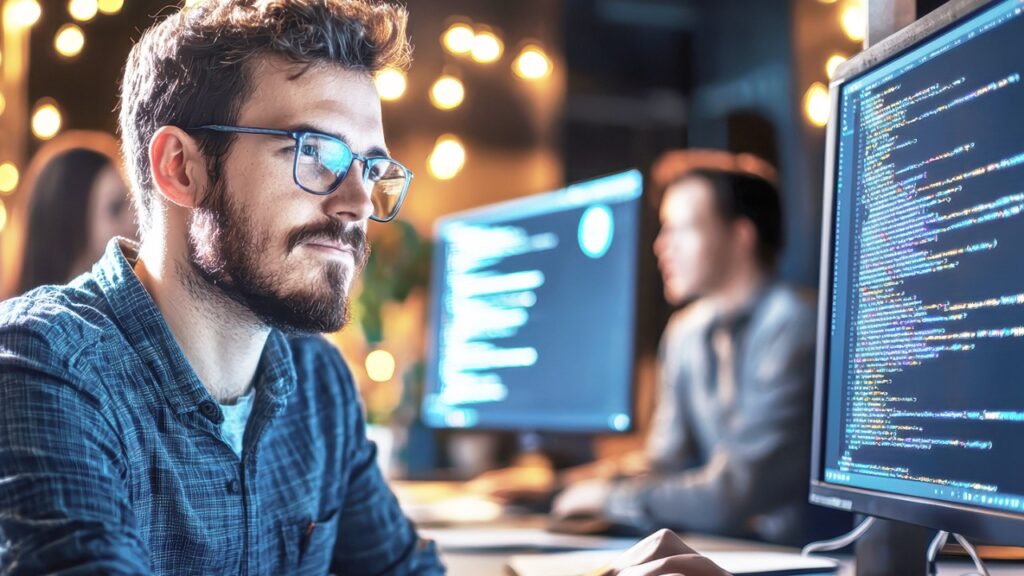Man, the digital age just never stops throwing curveballs, huh? We’ve gone from dusty photo albums to TikTok time warps, and now, somehow, we’ve got AI face swaps getting tossed into the mix. Nobody saw that one coming. I mean, yeah, these things started out as viral memes and a way for people to put their faces on movie stars, but honestly, they’re turning out to be weirdly handy for keeping cultural heritage alive, too. Who would’ve guessed? Suddenly, swapping faces isn’t just about laughs—it’s kinda genius for teaching, storytelling, and even helping people connect with their roots in a whole new way.
Bringing History to Life
Honestly, this AI face swap stuff? Freaking wild. Imagine wandering through a museum and—bam!—your guide suddenly morphs into Cleopatra or Abraham Lincoln, all thanks to some high-tech wizardry. Not just for show either; educational sites, cultural centers, you name it—they can make history feel way less boring, way more alive. It’s like Night at the Museum but, you know, without Ben Stiller running around.
Imagine walking through a museum exhibit and watching a lifelike video of Cleopatra, Sitting Bull, or Galileo speaking directly to the audience, powered by AI face swap. Honestly, history comes alive when you ditch those boring textbooks and stiff old paintings. Give me some wild, moving stories or cool visuals any day—it actually feels like you’re in it, not just watching from the sidelines. And let’s be real, younger folks? They’re probably gonna snooze through your standard lectures, but throw in something interactive and suddenly they’re paying attention. It’s just way more personal.
Reviving Oral Traditions and Folklore
You know, in a bunch of places around the world, oral tradition is everything. Like, grandma telling stories by the fire isn’t just a family thing—it’s the way the whole group holds onto its history. Now imagine bringing that vibe into the digital world. With all this wild AI face-swapping magic, you could have someone’s late grandpa pop up in new videos, telling the same old tales, same face, same quirks, same voice. It’s kinda spooky, honestly. But also, pretty beautiful.
See, it’s not just about the words. Written stuff can’t hang onto the tiny smirk, the eye-crinkles, or the way someone laughs at their own joke in the middle of a legend. Those things? They’re what bring old stories to life. Toss familiar faces into the mix and suddenly everyone’s paying attention again, even the teenagers buried in their phones.
In places where storytelling isn’t just tradition, but the backbone holding everything together—think lots of indigenous communities—using this tech could actually keep languages and customs from fading out. I mean, it’s like giving oral tradition a high-tech defibrillator: zap, back to life.
Educational Simulations for Cultural Learning
Honestly, the way schools are messing around with AI face swap tech is kind of wild (in a good way). Picture this: instead of just reading about some ancient festival or major event, students can jump into these virtual worlds where digital versions of historical figures or regular community folks actually walk them through rituals and customs. And with face swap? Suddenly, the people in those scenes don’t just look like random textbook models—they look like someone from your own neighborhood, your class, maybe even your cousin. That’s way more likely to catch your attention than another stiff history video, right?
Plus, there’s this whole empathy angle. Swapping faces so you literally see yourself as someone from another culture? That hits different. It’s hard to stereotype people when you’ve just spent twenty minutes living as them, even virtually. Feels like this kind of thing could actually get people talking instead of just sitting through boring lectures about “global understanding.” At least, here’s hoping.
Digitally Restoring Lost or Damaged Media
Honestly, old school photos and videos fall apart over time—cracks, weird blurs, sometimes half a face just straight-up disappears. Kinda tragic, right? But now, with this wild AI face swap tech, people are pulling off digital wizardry: basically patching up missing or busted faces using whatever scraps of image data are still hanging around.
Lately, you’ve got history buffs and artsy folks using these tools to breathe life back into ancient movie reels or crumbling snapshots. Suddenly, faces reappear, and stuff that once looked like a haunting glitch in the Matrix actually feels real again. It’s not just about seeing someone’s grandpa’s mustache—restoring those features brings back all the feels and keeps the past from fading into pixelated oblivion.
Ethical Considerations and Cultural Sensitivity
AI face swap tech, honestly, it’s a wild tool—big potential for museums and history buffs trying to bring the past to life. But you can’t just go swapping faces all willy-nilly, especially when it comes to cultures with deep traditions. I mean, think about it: in lots of Indigenous communities, they have rules (actual rules!) about showing ancestors in the media. If someone ignores that and just slaps a digital face on an old photo, it’s not just rude. It’s borderline disrespectful.
So, yeah. Before any museum or institution even touches this stuff, they really need to check in with the people whose heritage is at stake—talk to elders, cultural leaders, that sort of thing. Don’t just assume tech is cool because it’s shiny and new. Set up ground rules, be crystal-clear about intentions, and, for the love of all that’s holy, no sneaky backdoor projects. Otherwise, it turns from a cool history lesson into straight-up cultural exploitation. No one wants that.
Preserving Identity in a Globalized World
Globalization’s a non-stop train, right? And yeah, a lot of cultures—especially the ones you don’t see in big Hollywood blockbusters—can get steamrolled by all the blending. Weirdly enough, AI face swap tech actually throws out a sort of lifeline. It’s not just for memes and silly videos—think digitized family albums or, I dunno, a museum exhibit where you can literally see yourself as your ancestors. Super cool. Schools, local archives, even bored teenagers messing around on their phones—anyone can use it, really. That stuff sticks. It’s way more personal and lasting than, say, a dusty photo in some random textbook. With a bit of tech magic, it gives all those old stories a face people won’t forget anytime soon.
Conclusion
Okay, real talk: AI face swap started out as that weird party trick you’d mess with on Snapchat, right? But look at it now—people are actually using it to breathe new life into fading traditions and old-school stories. It’s wild. Imagine watching a dusty black-and-white film, and suddenly, you recognize your great-grandpa’s grin in the hero’s face. Stuff like that gets people jazzed about their own history. If folks don’t get reckless with it and actually pay attention to the meaning behind the faces, this tech can totally become a game-changer for keeping culture from getting lost in the shuffle.
Honestly, while everyone’s chasing the next flashy app, AI face swap low-key has the chops to connect us with where we came from. It’s like mixing grandma’s recipes with a robot chef—tradition meets sci-fi, but kinda beautiful, honestly.



